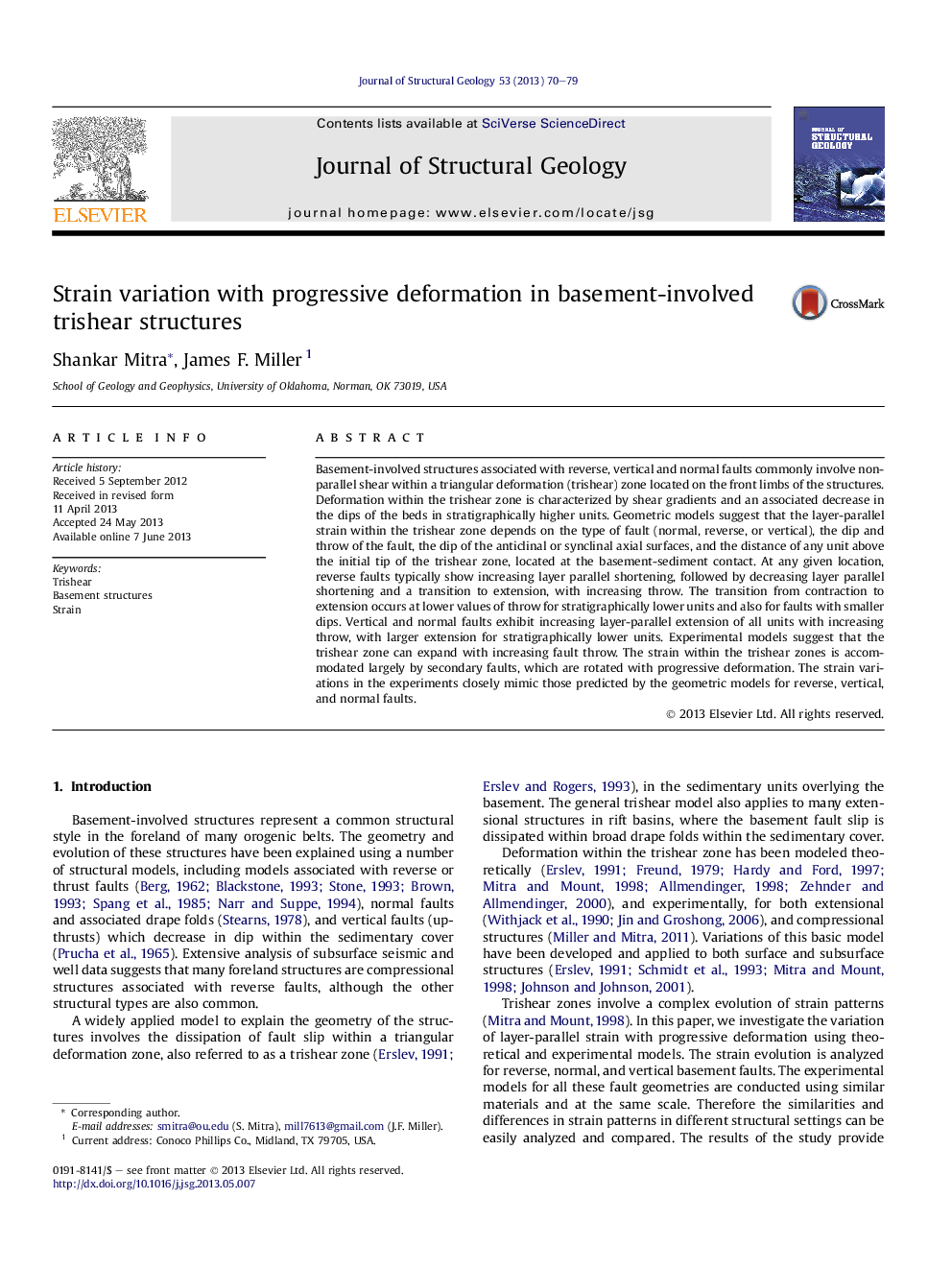| Article ID | Journal | Published Year | Pages | File Type |
|---|---|---|---|---|
| 6445106 | Journal of Structural Geology | 2013 | 10 Pages |
Abstract
Basement-involved structures associated with reverse, vertical and normal faults commonly involve non-parallel shear within a triangular deformation (trishear) zone located on the front limbs of the structures. Deformation within the trishear zone is characterized by shear gradients and an associated decrease in the dips of the beds in stratigraphically higher units. Geometric models suggest that the layer-parallel strain within the trishear zone depends on the type of fault (normal, reverse, or vertical), the dip and throw of the fault, the dip of the anticlinal or synclinal axial surfaces, and the distance of any unit above the initial tip of the trishear zone, located at the basement-sediment contact. At any given location, reverse faults typically show increasing layer parallel shortening, followed by decreasing layer parallel shortening and a transition to extension, with increasing throw. The transition from contraction to extension occurs at lower values of throw for stratigraphically lower units and also for faults with smaller dips. Vertical and normal faults exhibit increasing layer-parallel extension of all units with increasing throw, with larger extension for stratigraphically lower units. Experimental models suggest that the trishear zone can expand with increasing fault throw. The strain within the trishear zones is accommodated largely by secondary faults, which are rotated with progressive deformation. The strain variations in the experiments closely mimic those predicted by the geometric models for reverse, vertical, and normal faults.
Keywords
Related Topics
Physical Sciences and Engineering
Earth and Planetary Sciences
Geology
Authors
Shankar Mitra, James F. Miller,
